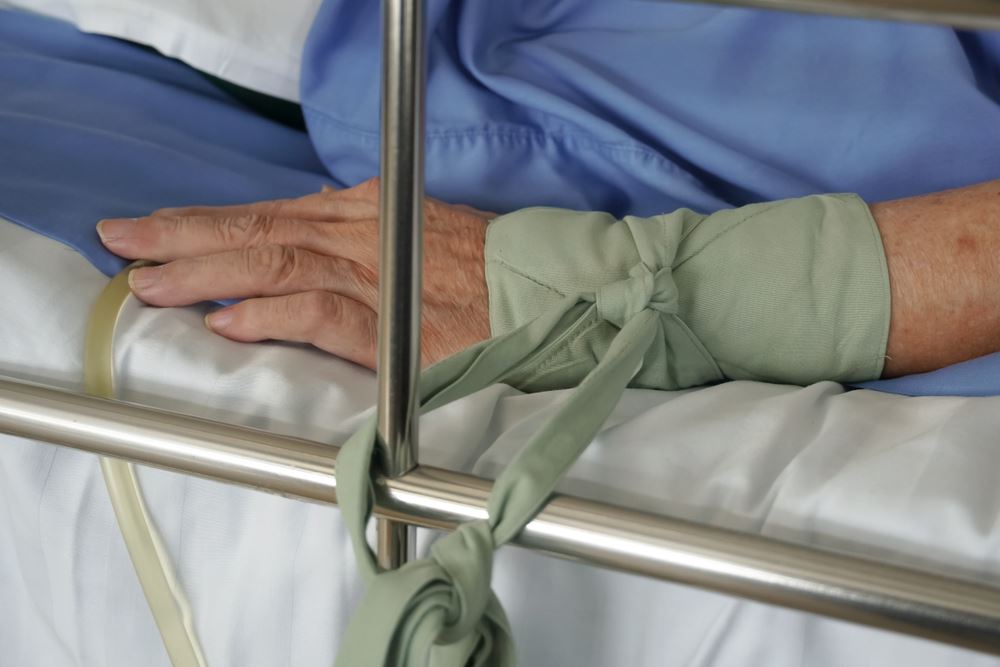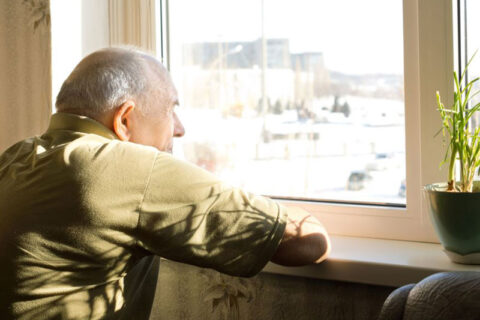Misuse of Restraints in Nursing Homes

The safety and well-being of our elderly loved ones are of paramount importance when they reside in nursing homes and assisted living facilities. Unfortunately, one prevalent yet often overlooked issue that compromises their quality of life is the misuse of restraints. Many facilities resort to using restraints for the convenience of their staff or as a shortcut to cope with understaffing instead of employing appropriate fall prevention techniques such as side rails and bed/chair alarms.
The Kansas nursing home attorneys at the Law Office of Tom Wagstaff Jr., LLC delve into the misuse of restraints in nursing homes, its impact on residents, and how we can prevent this form of elder abuse.
What are Restraints?
Restraints, whether physical or chemical, should always be medically justified and prioritized for the safety and well-being of the patient, as outlined in the State Operations Manual from the Centers for Medicare & Medicaid Services. Physical restraints include devices such as belts, vests, mitts, and limb restraints designed to restrict a resident’s movement. Chemical restraints, on the other hand, involve the use of medications to control a resident’s behavior. Federal and state laws regulate the use of restraints, and it is only acceptable when medically necessary and with the informed consent of the resident or their legal representative.
Misuse of Restraints
Unfortunately, many long-term care facilities misuse restraints to manage residents more efficiently and reduce the need for direct care. This practice infringes on residents’ rights and can have severe physical and emotional consequences. In some cases, the overuse of restraints has resulted in injuries, medical complications, and even death.
One significant issue with the misuse of restraints is that it often replaces implementing proper fall prevention techniques. Fall prevention is crucial in nursing homes, as falls are a leading cause of injury and death among elderly adults. Some effective fall prevention strategies include using side rails, bed or chair alarms, and regular assessments of residents’ mobility and balance. However, when facilities misuse restraints as a substitute for these techniques, residents are at a higher risk of falls and related injuries.
The misuse of restraints also has psychological consequences for nursing home residents. Being restrained can lead to feelings of isolation, humiliation, and helplessness. In some cases, it can exacerbate existing mental health issues such as anxiety and depression. Long-term use of restraints can even result in a decline in cognitive and physical functioning, further reducing a resident’s quality of life.
Preventing Misuse of Restraints in Nursing Homes
There are several steps that families, caregivers, and advocates can take to ensure that facilities adhere to best practices when it comes to the use of restraints:
- Education and awareness: Educate yourself about the appropriate use of restraints, the potential consequences of their misuse, and the rights of nursing home residents. Share this information with friends, family members, and other caregivers to raise awareness about this critical issue.
- Regularly visit and monitor your loved one’s care: Frequent visits provide emotional support for your loved one and allow you to observe the care they receive. Note any restraints being used and inquire about their medical necessity. If you have concerns, discuss them with the nursing home staff and administration.
- Advocate for proper fall prevention techniques: Encourage the nursing home to implement appropriate fall prevention strategies, such as side rails, bed/chair alarms, and regular mobility assessments. Emphasize the importance of individualized care plans that prioritize the safety and well-being of each resident.
- Report any concerns or incidents: If you suspect that your loved one is being subjected to the misuse of restraints, report your concerns to the nursing home administration, the state’s long-term care ombudsman, and the appropriate licensing and regulatory agencies. Consult with a Kansas nursing home abuse attorney to explore your legal options if necessary.
- Support legislation and policy changes: Advocate for stronger regulations and enforcement to prevent the misuse of restraints in nursing homes. Contact your elected officials and urge them to support policies that protect the rights and dignity of nursing home residents.
Kansas Nursing Home Attorneys at the Law Office of Tom Wagstaff Jr., LLC
The misuse of restraints in nursing homes is a pervasive problem that compromises the safety and well-being of our elderly loved ones. By educating ourselves, advocating for proper fall prevention techniques, and holding care facilities accountable, we can help prevent this form of elder abuse and ensure that our loved ones receive the quality care they deserve.
Our dedicated nursing home and assisted living neglect attorneys at the Law Office of Tom Wagstaff Jr., LLC fight elder abuse and have extensive experience handling restraint-related cases, including patients’ rights violations. We are ready to analyze your case and work towards ending your loved one’s suffering.
Contact the Law Office of Tom Wagstaff Jr., LLC for a free consultation, and let’s work together to stop elder abuse and neglect.


